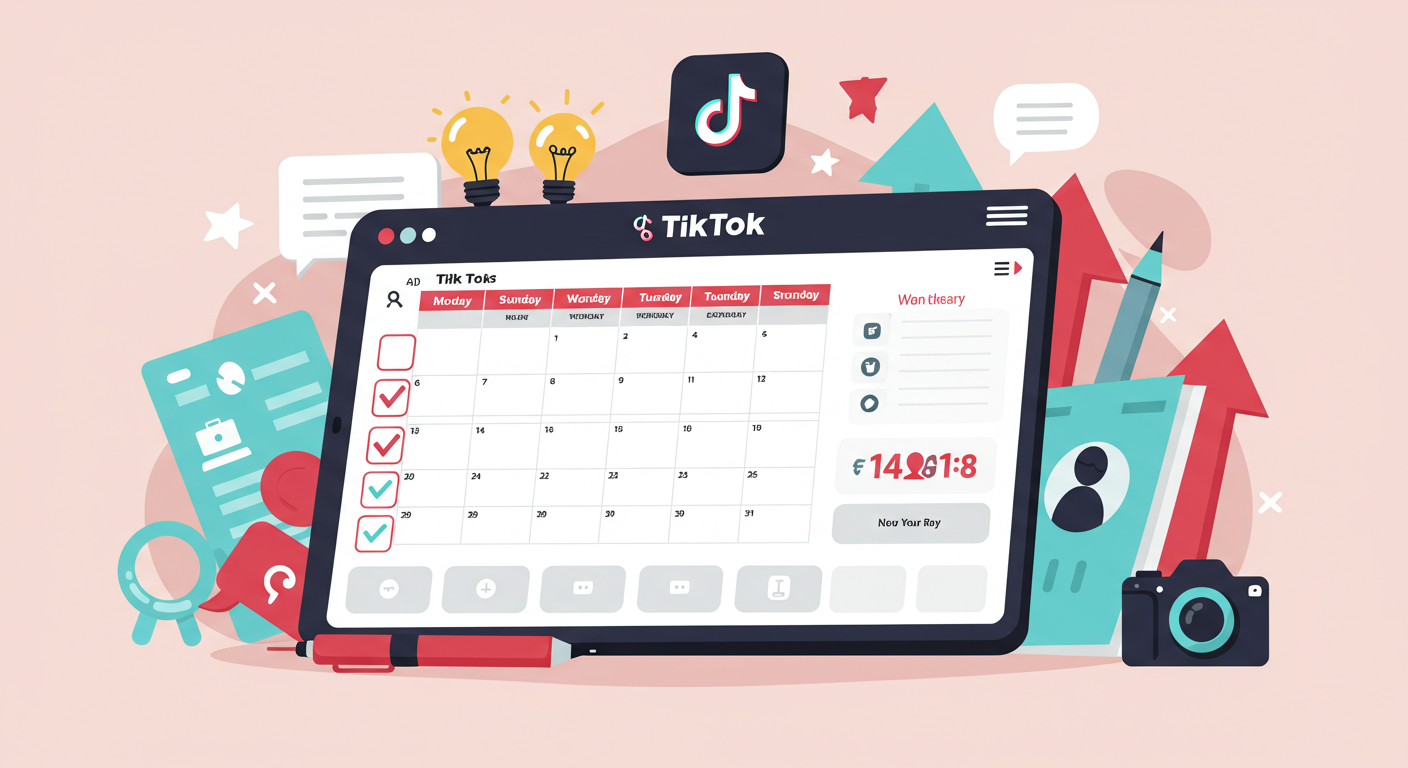How to Create a TikTok Content Calendar That Drives Real Growth
Struggling to stay consistent on TikTok? Learn how to build a TikTok content calendar that increases engagement, boosts reach, and helps you grow organically.

How to Create a TikTok Content Calendar That Drives Real Growth
Growing on TikTok isn’t just about jumping on trends — it’s about showing up consistently with content your audience actually wants. But posting regularly without a plan leads to burnout or random content that doesn’t convert.
That’s where a TikTok content calendar becomes a game-changer. It helps you plan ahead, stay consistent, and build real momentum.
Whether you’re a solo creator, influencer, or business owner, here’s how to build a TikTok content calendar that helps you stay visible, relevant, and growing.
1. Set Clear Content Goals
Before opening a calendar tool, ask yourself:
-
What is the purpose of your TikTok account?
-
Do you want to educate, entertain, sell, or build a personal brand?
-
How often can you post consistently?
Your calendar should support your long-term goals, not stress you out with unrealistic expectations.
2. Choose 3 to 5 Content Pillars
Content pillars are recurring themes that define your TikTok brand. They help keep your content focused and instantly recognizable.
Examples of content pillars for a fitness creator:
-
Home workout tutorials
-
Nutrition tips
-
Relatable gym humor
-
Client transformations
-
Q&A or myth-busting
Each video idea you come up with should align with one of these categories.
3. Plan a Realistic Posting Schedule
TikTok rewards consistent creators, but that doesn’t mean you need to post every day.
Start with:
-
3–5 posts per week
-
1–2 trend-based videos
-
1 educational or evergreen video
-
1 personal or behind-the-scenes video
Build momentum gradually — consistency > intensity.
4. Create a Simple Weekly Template
You don’t need fancy tools to start. A Google Sheet, Trello board, or Notion template works just fine.
Your calendar should include:
-
Date
-
Content idea
-
Caption or hook
-
Audio (if trend-based)
-
Hashtags
-
CTA (call-to-action)
Example Weekly Layout:
| Day | Content Idea | Caption / Hook |
|---|---|---|
| Monday | Fitness tip (educational) | "Stop doing this after workouts" |
| Wednesday | Trend + branded twist | "But make it gym-themed 😂" |
| Friday | Storytime | "This happened during my first PT session" |
5. Mix Trend-Driven and Evergreen Content
Trends bring exposure. Evergreen content brings long-term value.
Your calendar should strike a balance:
-
Trends: Use trending sounds, filters, formats
-
Evergreen: Tutorials, how-to’s, listicles, behind-the-scenes
Together, they keep your content fresh and discoverable year-round.
6. Leave Room for Spontaneity
Not every post needs to be planned weeks in advance. Leave 1–2 flexible slots per week for:
-
Duets
-
Comments turned into videos
-
Real-time reactions
-
Viral sound adaptations
Spontaneous content adds authenticity — and often performs best.
7. Review Performance and Adjust
Each month, review your TikTok analytics:
-
What content performed best?
-
Which days got the most views?
-
Are people watching your videos to the end?
Use this data to optimize future content. Delete what’s not working, double down on what is.
Final Thoughts
A TikTok content calendar isn’t about rigid schedules — it’s about freeing up your creative energy to focus on what works. With clear goals, defined pillars, and a simple schedule, you’ll build a consistent presence that gets noticed by both your audience and the algorithm.
Ready to grow faster and smarter? At socialbulker.com, we help creators and brands scale their TikTok strategy with real engagement, not bots. Join the creators who grow with purpose.